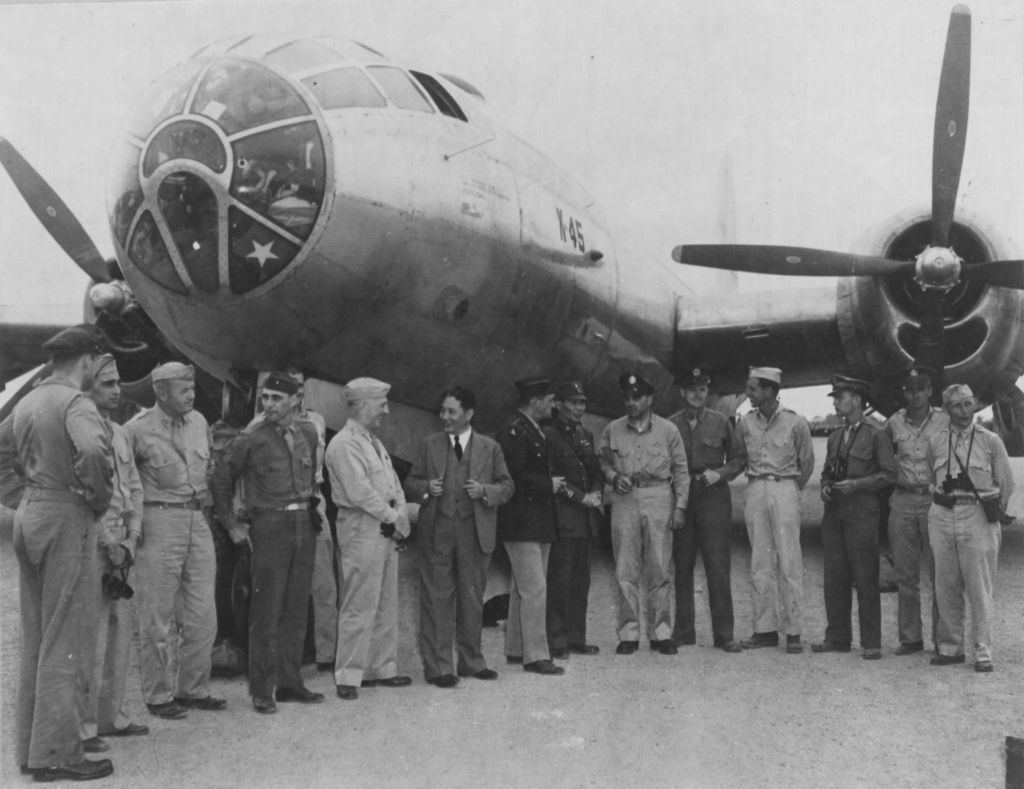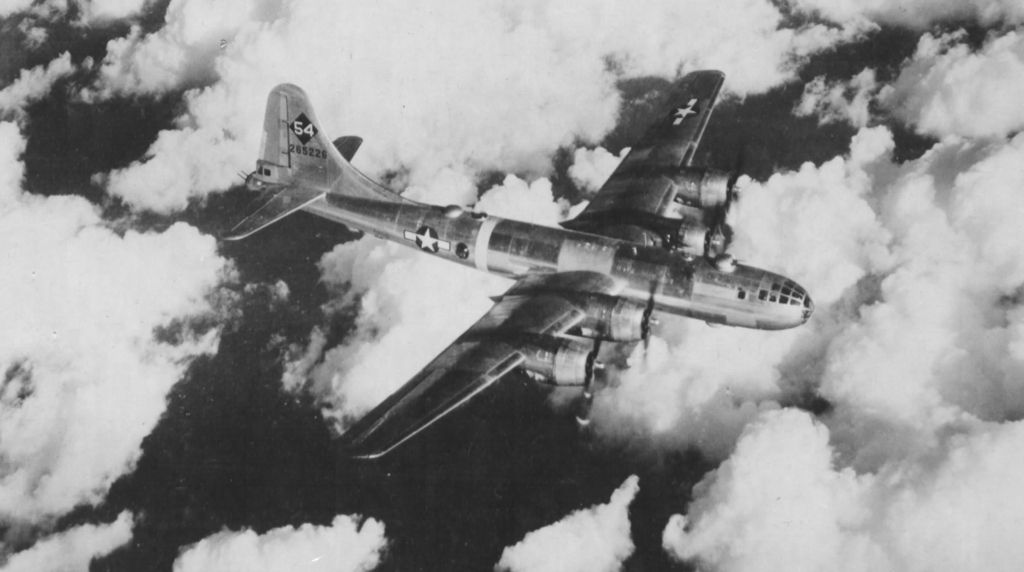Forums
- Forums
- Duggy's Reference Hangar
- USAAF / USN Library
- "PROJECT MATTERHORN"
"PROJECT MATTERHORN"
Post a reply
- Go to Previous topic
- Go to Next topic
- Go to Welcome
- Go to Introduce Yourself
- Go to General Discussion
- Go to Screenshots, Images and Videos
- Go to Off topic
- Go to Works in Progress
- Go to Skinning Tips / Tutorials
- Go to Skin Requests
- Go to IJAAF Library
- Go to Luftwaffe Library
- Go to RAF Library
- Go to USAAF / USN Library
- Go to Misc Library
- Go to The Ops Room
- Go to Made in Germany
- Go to Campaigns and Missions
- Go to Works in Progress
- Go to Juri's Air-Raid Shelter
- Go to Campaigns and Missions
- Go to Works in Progress
- Go to Skinpacks
- Go to External Projects Discussion
- Go to Books & Resources
-
12 years agoFri Nov 07 2014, 04:35pm
 Main AdminText by By Lt. Col. Gary Gray (Thanks)
Main AdminText by By Lt. Col. Gary Gray (Thanks)
On 7 December 1941, aircraft from the Japanese Imperial Navy attacked our Pacific Fleet at Pearl Harbor and America was suddenly thrust Into a World War against the forces of fascism and tyranny. We were not caught unprepared. Many pioneer Air Force leaders had watched developments in Europe since the war had started in Poland in September 1939. They studied tactics and strategies to prepare their Air Force for its inevitable meeting with its manifest destiny - strategic warfare. All agreed that to win the war would require a new strategic weapon - the very long-range bomber - which could carry the war to the heart of the enemy destroying his war-making capability at his very soul.
The Boeing B-29 "Superfortress" was the weapon all the airmen were waiting for. The B-29 was not specifically designed to bomb Tokyo, but Japan was of growing concern because of its Asian wars of conquest in the late 1930s and because she had joined the Axis Powers (Germany and Italy) on 27 September 1940. The B-29 was originally conceived by General of the Army Air Corps, Hap Arnold in November 1939, more than two years before Pearl Harbor was attacked. It was inspired by the Nazi blitzkrieg (lightning war) in Europe. The high probability of an early and total German victory in Europe and the fear that the Nazis could then move from Europe to North Africa and then into the Americas, meant that aerial attacks could easily be mounted against the United States.
The U.S. Army Air Corps became the Army Air Forces (AAF) on 21 June 1941 and the national importance of development of the B-29 was quickly highlighted in a report issued in the summer of 1941. Two Air Staff Majors from the Air War Plans Division (AWPD)_took part in the development of the first major comprehensive air plan (AWPD-1) for the defeat of the Axis Powers. Majors Hoyt S. Vandenberg and Hayward S. Hansell helped develop the plan which called for an Army Air Force (AAF) of over 63,000 combat aircraft, and another 30,000 transport, observation, photographic, and reconnaissance aircraft by 1945. Of these aircraft, 3730 very-long-range (VLR) (4,000-mile tactical operating radius) bombers, constituted in 44 groups, were urgently required. These VLR bombers would be able to attack Germany from bases in Newfoundland, Greenland, Africa, India, and the northeastern United States. The plan called for 239 groups and 108 observation squadrons and required the production of 3,000 planes a month. (Maximum AAF strength would actually reach 269 tactical groups during World War II.)
In the summer of 1942, Gen. Arnold asked Brig. Gen. Hansell, Deputy Commander of Eighth Air Force to conduct a study to determine how many aircraft should be produced in 1943 in order to gain complete air ascendancy. Hansell reported back in September that 281 combat groups were needed by 1 January 1944 and 76 would need to be heavy bombers. America needed to produce 131.000 planes; 75.000 to the Army Air Force (AAF). 33.000 to the Navy, and 22.000 to the Allies. The key to victory would be the strategic power of the new B-29 which was first ordered In August of 1940 and the first prototype (XB-29) made Its first flight on 21 September 1942.
The B-29 was being designed to fly over longer distances, at higher altitudes, at greater speeds, and to carry heavier bomb loads than the B-17 and the B-24. It would be the heaviest bomber in the skies, having an empty weight of 70,140 pounds and a gross weight of 110,000 pounds with a speed of over 350 mph. Its four 18-cylinder engines developed 2.430 horsepower and its 8,198 gallons of fuel capacity enabled it to carry up to 20,000 pounds of bombs 3.250 miles and return.
The entry of the U.S. into the war in December 1941 put the project on an emergency basis and orders were placed for the B-29, right-off the drawing board, even though the aircraft had not yet been tested. Consequently, the development of the B-29, called "the three-billion-dollar gamble" was fraught with hazard and potential tragedy. The B-29 incorporated inno-vational concepts; a new engine, pressurized crew stations, and remote-control gun turrets. Its contributions during the war proved that the gamble was worthwhile. The B-29 emerged as the most formidable air weapon of the war. By the end of the war, Boeing in Seattle, Bell in Atlanta, and Martin in Omaha, would build 3,970 of the B-29s.
Although originally intended for use against Germany, by the summer of 1943 Air Force planners proceeded along a course aimed at Japan. Because of Japanese expansion during the first year of the war, even the very-long-range B-29s would be unable to reach the Japanese homeland until the enemy's perimeter had been reduced.
The Pacific remained a command and control nightmare, with its arguments over definition of command boundaries, supply distribution, and personality clashes. Once the Marianas were taken and bases established, it would be possible to attack Japan more efficiently than was possible from Indian and Chinese bases. But this would mean that the B-29s, operating from General Joe Stil-well's China-Burma-India theater, would "violate" the air over General MacArthur's Southwest Pacific territory as well as the air over Admiral Nimitz's Pacific territory.
General Arnold visited the Pacific in the autumn of 1942 and realized then that he would have to personalty retain command of the B-29s because they would be based and operated in several different theaters of operations. General Arnold stated, "There was nothing else I could do, with no unity of command in the Pacific."
The solution devised by the Joint Chiefs of Staff would be the establishment of the Twentieth Air Force, under the direct control and with General Arnold as the executive agent for the Joint Chiefs. This solved the problem of the B-29 units but, in effect, compounded those of logistics and administration, which devolved upon the theater commanders. The strained in-terservice relations were stretched nearly to the limit by the arrival of the B-29 in the Pacific.
In Washington, early in 1943, the Joint Strategic Survey Committee favored a drive supported by carrier-based aircraft across Admiral Nimitz's Central Pacific theater to the China coast, where air bases could be established on the islands to permit an extended air campaign against Japan. Meanwhile, in the Southwest Pacific theater, General Douglas MacArthur urged an advance along the New Guinea-Philippines axis to the China coast. The debate raged throughout 1943.
What was clear was that the new B-29 "Superfortress" bomber that had been bought in 1939, from blueprints alone, would begin production in 1943 and would be service tested in combat, beginning in 1944. With Gen. Mac-Arthur's support, Lt. Gen. George C. Kenney, Commander of the Far East Air Force, wanted to station the B-29s at Darwin, Australia, and employ them against strategic targets in the Dutch East Indies to cut the Japanese oil supply lines.
Meanwhile, General Chennault, Commander of the AAF's Fourteenth Air Force fThe Flying Tigers) and Chief of Staff of Generalissimo Chiang Kai-shek's Chinese Air Force, wanted the B-29s assigned to them. The deteriorating military situation in the China-Burma-India (CBI) theater favored the earmarking of the first B-29s to China and India. Allied planners did not believe that the war in the east could be decided in China. They preferred to move against Japan from the east and south. But the Generalissimo controlled a seemingly unlimited supply of manpower which could be used against Japan. It was hoped that a bomber offensive out of Chinese bases might "tremendously simulate Chinese morale and unify the Chinese people under the leadership of Chiang Kai-shek."
But others in Washington, including Generals Arnold and Carl Spaatz were determined that the B-29 force would be used against targets in or adjacent to the Japanese home islands. The long journey to reach the Japanese homeland would require the B-29s to initially stage from bases in south-central China. Thus began "Project Matterhorn." Initially, B-29 bases would be constructed near Calcutta, India, and at Chengtu, China. Twentieth Air Force's XX Bomber Command, with its two wings of B-29s, would be based there.
It was felt that Japan's urban industrialized areas were few, concentrated, and very vulnerable to incendiary attack. But because of logistical problems , the XX Bomber Command would be able to operate only a few B-29 groups from Chengtu in isolated south-central China. Additionally, from Chengtu, the B-29s would not have enough range to reach Tokyo and the other industrialized targets on the main island of Honshu. Hence, Air Staff planners favored the Mariana Islands, which were held by the Japanese, as potential bases for the B-29s. The Marianas were only 1,500 miles southeast of Japan. Additionally, to accommodate four more B-29 groups, bases were also constructed at Adak and Shemya in Alaska's Aleutian Islands.
Gen. Arnold urged that B-29 operations begin from China in May 1944 and from the Marianas before the end of the same year. Therefore, the Joint Chiefs of Staff ordered Admiral Nimitz's Pacific theater forces to invade the Marianas beginning on 15 June 1944. Since Twentieth Air Force's new XXI Bomber Command would be based in the Marianas, the Joint Chiefs limited the size of XX Bomber Command in India to a single wing of four B-29 groups.
"THE TWENTIETH'S FIRST COMBAT MISSION"
Project Matterhorn proceeded with the establishment of a Strategic Air Force Headquarters in Washington, D.C. similar to concept to the Army Air Corps' old General Headquarters (GHQ) Air Force. GHQ had been re-designated as the Air Force Combat Command when the Army Air Force was created on 21 June 1941 from the Army Air Corps.
Thus, the Twentieth Air Force was constituted and activated at Washington, D.C. on 4 April 1944 and General Arnold assumed personnel command as the executive agent of the Joint Chiefs of Staff. General Hansell, then Chief of the Combined and Joint Staff Division of Army Air Force (AAF) was designated Chief of Staff, and members of the Air Staff did double duty as the staff of the Twentieth Air Force. This plan very effectively denied the B-29 to the various warring factions. It kept the Superfortresses out of the hands of the three theater commanders; Nimitz, MacArthur and Stilwell, none of whom were particularly impressed with the strategic potential of the new very-long-range bombers.
Commanders of the various theaters in which the Twentieth Air Force's XX and XXI Bomber Commands were to be based, were directed by the Joint Chiefs of Staff to coordinate B-29 operations with other air operations in their theaters. They were also to construct and defend the B-29 bases and provide logistical support and common administrative control over the B-29 forces. World War II air historians would later agree that the wartime creation of the Twentieth Air Force was one of the most important events in the United States Air Force's history. It established the precedent for the unified command and employment of strategic air striking forces.
The XX Bomber Command was Initially called upon to operate the new B-29s on very-long-range missions against priority iron and steel targets in Japan and Japanese-occupied Manchuria. The XX Bomber Command faced the additional problem of providing logistical support across the Himalaya Mountains to the forward operating bases at Chengtu. The Himalayas are the highest, most treacherous mountains in the world and the B-29 was not yet the world's most efficient aircraft. Flying fuel, ammunition, bombs, parts, and supplies over "The Hump" from India to China and back required six B-29 logistics flights to make possible just one B-29 bombing mission against Japan.
On 2 April 1944, just two days before the Twentieth Air Force was activated in Washington, the first B-29 landed at Kharagpur, about 70 miles west of Calcutta, India. Before it could land, 6,000 U.S. troops and 27,000 Indians labored for two months to build the runways and bases. At the same time, since the B-29s would be based In India, out of the reach of the Japanese, thousands more Chinese were busy constructing staging areas in the neighborhood of Chengtu, China. By 10 May, the Chengtu bases were ready for the B-29s. These bases were within the range of the Japanese homeland, although not within range of Tokyo.
On 26 April 1944. two days after the India-to-China supply run had been initiated, a B-29 was attacked for the first time by enemy aircraft. A formation of 12 "Oscars" was sighted and six broke off into two formations. They stayed out of range for nearly 15 minutes, obviously studying the B-29, before attacking. The lead "Oscar" scored eight hits on the B-29, wounding the waist gunner. One "Oscar" left the battle smoking and the remaining "Oscars" attacked without conviction for another 25 minutes before breaking off the battle. The B-29 continued to Chengtu unchallenged by any other enemy aircraft.
For the first few weeks, the B-29 crews operated primarily as "truck drivers" which did not contribute much to their high-altitude formation flying, bombing, and gunnery skills - all which would be essentials to their primary mission of strategic bombing. It was two months before the first shakedown mission was scheduled. Brig. Gen. Kenneth B. Wolfe. Commander of XX Bomber Command, hoped to compensate for the training deficiencies by bombing the target at night, each plane going in individually rather than in formation. General Arnold, in Washington, rejected this and insisted upon a "daylight precision" attack because "the entire bomber program is predicated upon the B-29's employment as a visual precision weapon."
The first B-29 mission of the war was set for 5 June 1944, as it turned out, one day before the D-Day Normandy invasion in Europe. One hundred bombers were readied for the five hour, 1,000 mile trip to Bangkok's Makasan Railway Shops in Slam (Thailand). One B-29 developed mechanical problems and one crashed and exploded on takeoff. therefore, only 98 took off. Mechanical problems prevented 14 more from reaching their target. Of the remaining 84 aircraft, only 77 actually dropped their bombs on target and of these, 48 were forced to depend upon radar. Japanese antiaircraft fire greeted them and nine fighters rose to meet them, but no B-29s were lost to enemy action.
Late that afternoon, the B-29s began coming to earth, wherever possible, in friendly territory. Some landed in the home base area but others landed at a dozen nearby British bases. Two bombers were lost when they ditched in the Bay of Bengal, another was abandoned with engines malfunctioning, and a fourth was destroyed when it crash-landed at a British base. Thus. Twentieth Air Force's shakedown mission to Bangkok had cost five B-29s and 15 lives, but 73 B-29s had made the long round trip. The Twentieth Air Force had demonstrated that heavy loads could be carried over great distances and that's what the B-29 had been designed to do.
"AFTER YEARS OF PLANNING: TARGET - JAPAN"
Even before all the stray B-29 bombers had been reassembled from the Twentieth Air Force's first combat mission to Bangkok, General Wolf, Commander of XX Bomber Command, received urgent word from General Arnold. A B-29 attack upon the Japanese homeland must be carried out by mid-June. It must be a "maximum effort" which Arnold explained would help to divert the Japanese from their East China offensive, then threatening General Chennault's forward fields, and would also tie in with an "important operation" in the western Pacific. This would be the first attack upon the Japanese homeland since the Doolittle raid of April 1942 and several other strikes against Paramushiro in the Kurile Islands in 1943 by the Eleventh Air Force which was based in the Aleutians Islands, off Alaska.
The selected primary target was the Imperial Iron and Steelworks in Yawata on the island of Kyushu - 1,600 miles away from Chengtu. Arnold wanted no less than 70 bombers for 15 June and Wolfe had extended-range bomb bay fuel tanks for 86 B-29s. Wolfe knew he would mechanically lose many of the new "Dreamboats" (one of the key codewords for the B-29s) before reaching the target, so on 13 June he sent 92 bombers, of which 79 actually reached Chengtu. Since four were already there, he had a maximum of 83 available for the mission. But only 68 bombers would be air-borne for Japan for the 4 p.m. takeoff on June 15th. This would put the Twentieth Air Force bombers over Yawata before midnight. It would be no daylight precision attack. At 11:38, the lead plane radioed back "Betty, Betty, Betty" which was an echo of the Tora, Tora, Tora" (Tiger. Tiger, Tiger) signaled during the Pearl Harbor attack. Only 47 B-29s would actually drop bombs on Yawata. A half dozen jettisoned their bombs because of various mechanical problems, two bombed Laoyao Harbor which was the secondary target, and five others bombed various targets of opportunity. As in Bangkok, no damage resulted from enemy action but the Twentieth lost a total of six B-29s during the raid and another one on a post-mission reconnaissance flight.
The raid incensed the Japanese, but even more important to the future was the way the operation had been coordinated. On the very same day, Admiral Nimitz's forces opened the Marianas campaign with their assault upon the island of Salpan. Only three days after Admiral Nimitz's forces invaded the Marianas, construction of a B-29 base named Isley Field began on Saipan. Brig. Gen. Hansell arrived from Washington on 12 October 1944 to take command of XXI Bomber Command. Hansell's bombers conducted their first bombing mission on a high-level attack against Tokyo's aircraft plants on 24 November 1944. Japanese fighters rose to give battle but the interceptors had little real effect against the high-flying B-29s.
In late July 1944, XX Commander Wolfe, an engineer, was promoted and sent back to Wright Field as Commander of Materiel Command. There, he would supervise the future development and production of the B-29 bombers.
Placed in temporary command was Brig. Gen. Laverne Saunders. Barely a month later, on 29 August 1944, General Arnold put Major General Curtis LeMay in command of XX Bomber Command in India. LeMay immediately began shaking up the command. He stepped up crew training, improved maintenance and moved from the traditional diamond formation to the combat box formation he had developed in Europe.
By the autumn, XX Bomber Command was attacking aircraft production targets and dropping mines in Formosa, in Burma, in Shanghai, at Singapore and Sumatra, and in the Dutch East Indies as well. Japan's militarily-Imposed East Asia Co-Prosperity Sphere was feeling the heat now from the new Twentieth Air Force.
When LeMay took over XX Bomber Command, their scattered operations were dispersed In three ways: support of operations In the China-Burma-India (CBI) theater, support of the Pacific theater, and the Twentieth Air Force's major mission - operations as a separate strategic "global air force."
The impressive strategic capabilities of Twentieth Air Force were first demonstrated on 5 November 1944 with an attack upon Singapore, an important Japanese naval base. The round trip mission of nearly 4,000 miles was in itself an obstacle, but of the 76 B-29s dispatched, more than 50 bombed the primary target. Bombing was amazingly accurate and the docks were knocked out of commission for about three months. Only two B-29s and 12 men were lost.
The missions continued but then with unexpected suddenness, LeMay was transferred from XX to XXI Bomber Command in January 1945. He was replaced by Brig. Gen. Roger M. Ramey. Ramey was one of Gen. Kenney's former pilots and the ex-Chief of Staff of Twentieth Air Force's XXI Bomber Command. His major concerns were to get the XX Bomb Command out of the CBI theater and into the Pacific theater proper. After roughly 10 months of combat operations, XX Bomber Command flew its 49th and final mission in late March 1945. After that, its four combat groups left India for Tinian and Guam.
Enjoy, as usual right click & save as.




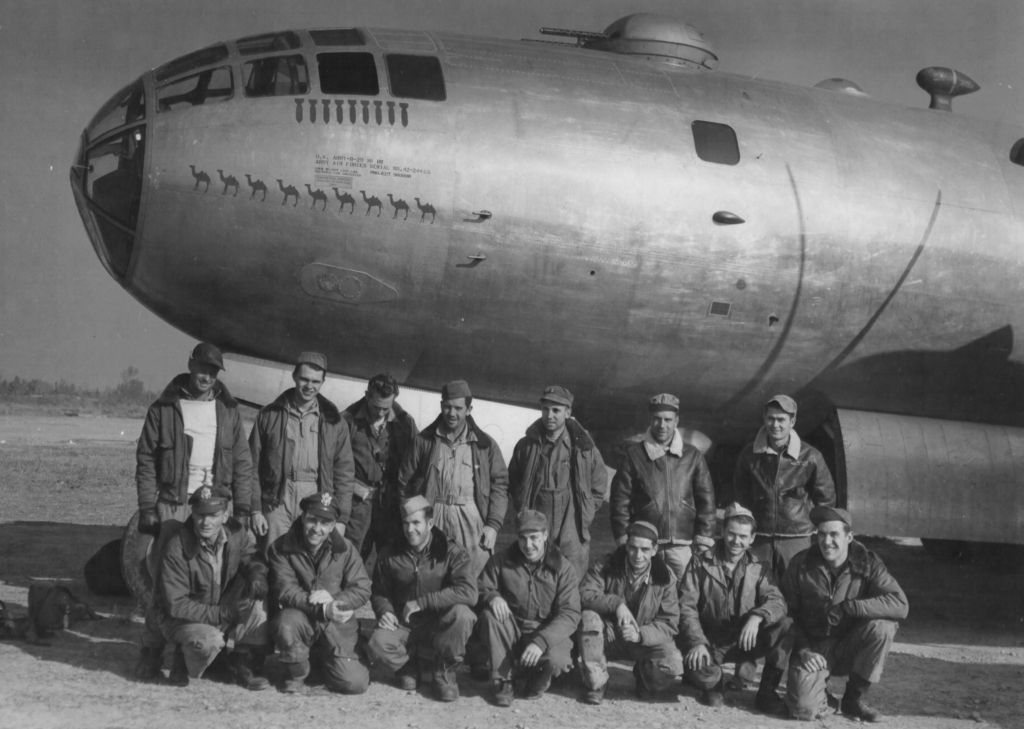







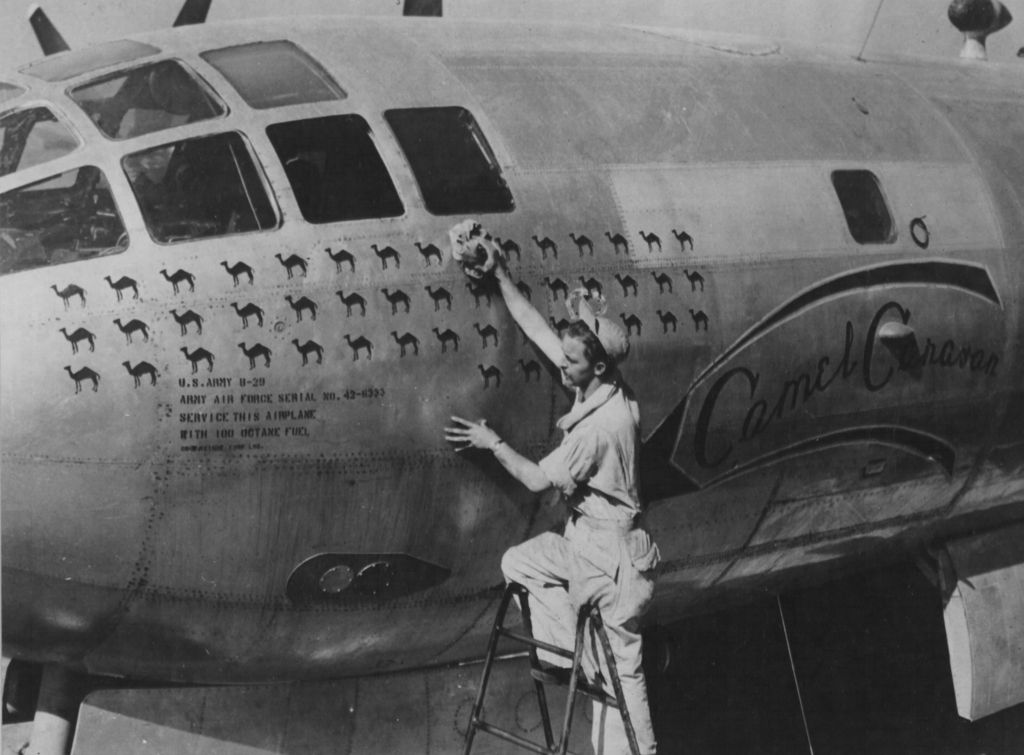









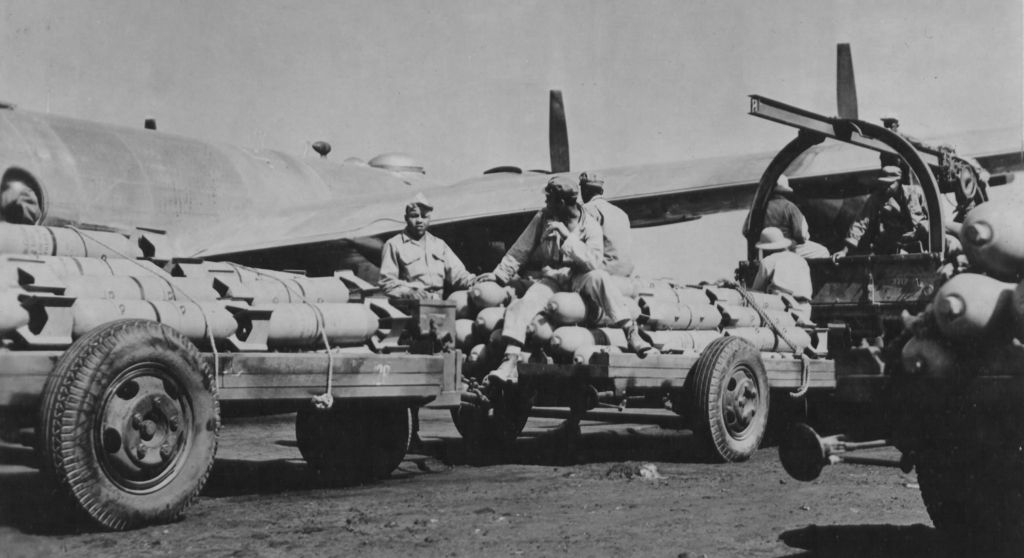






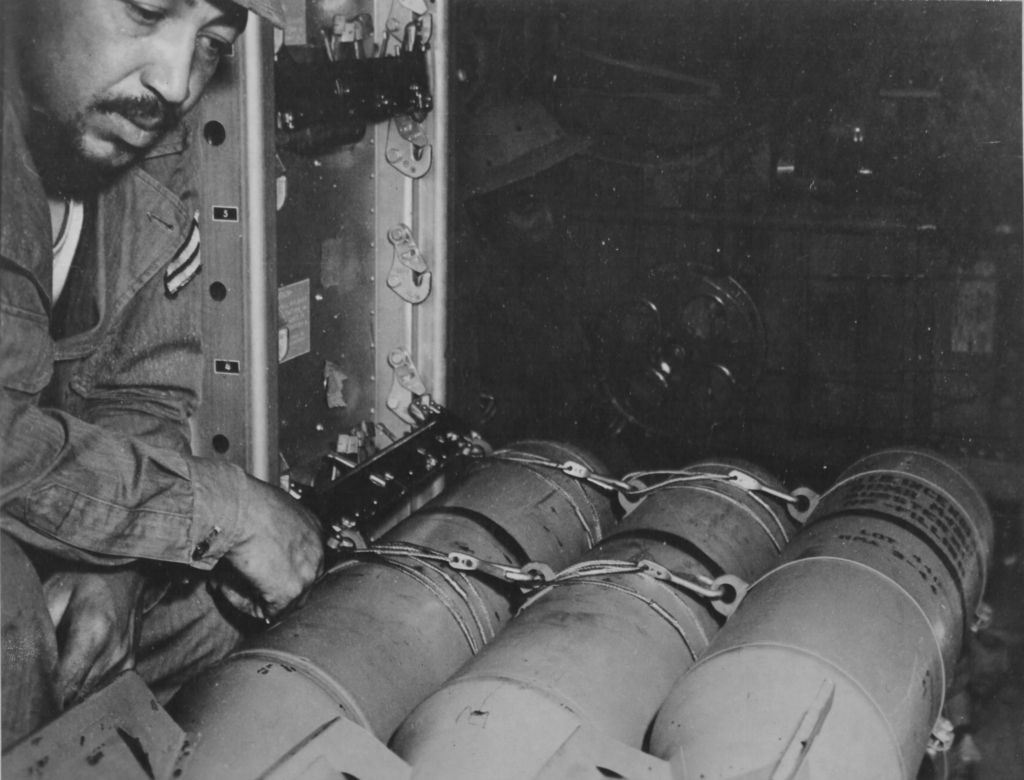






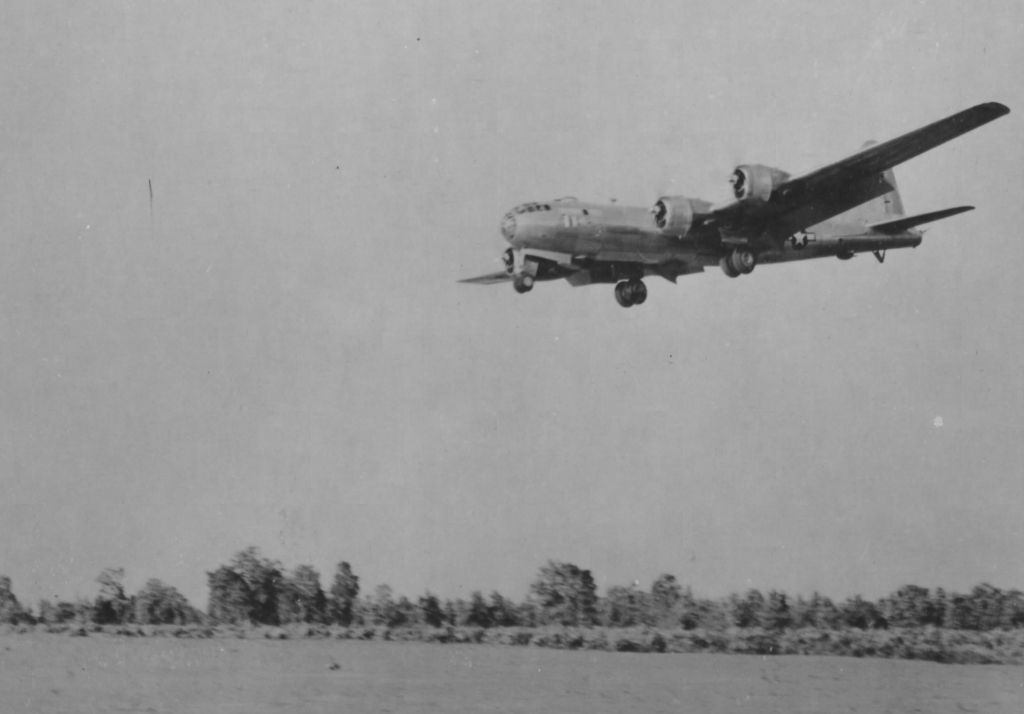





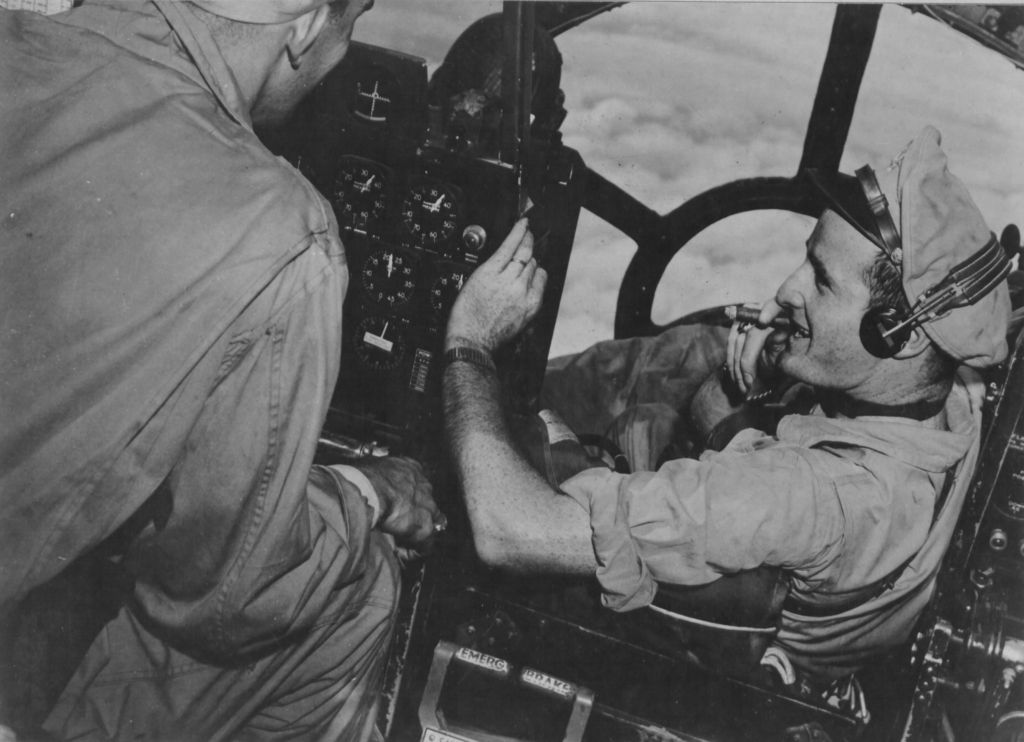

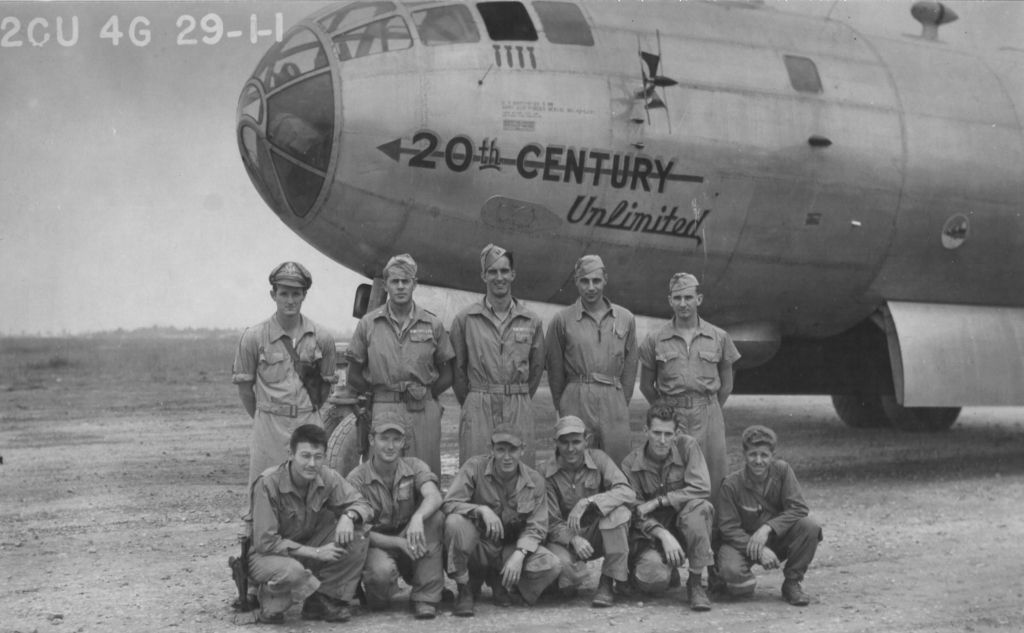
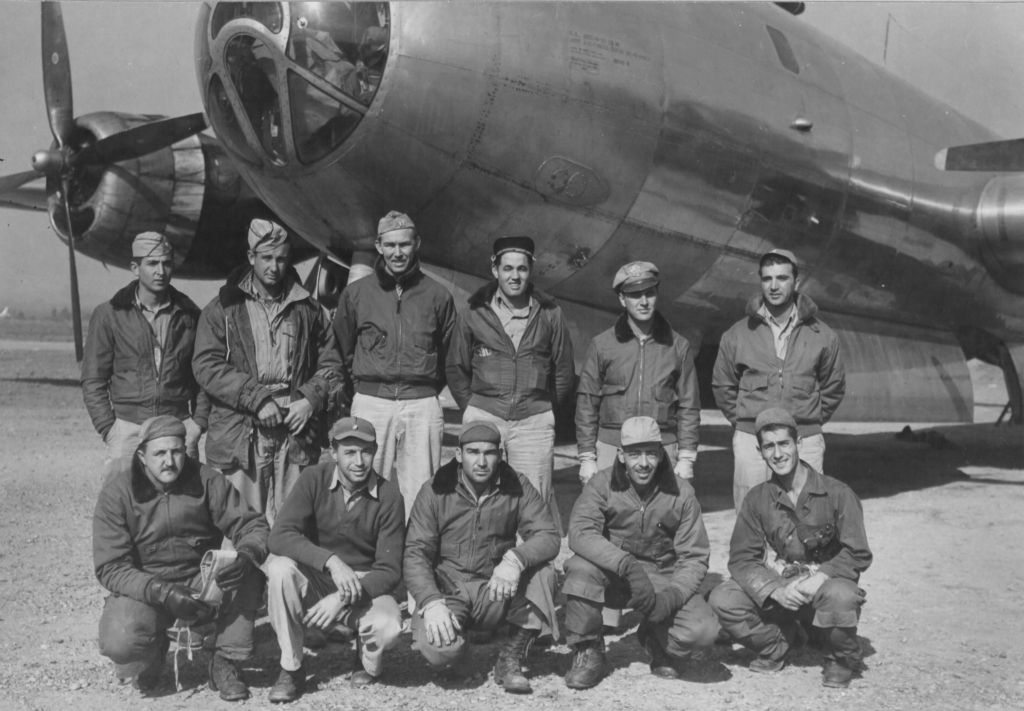














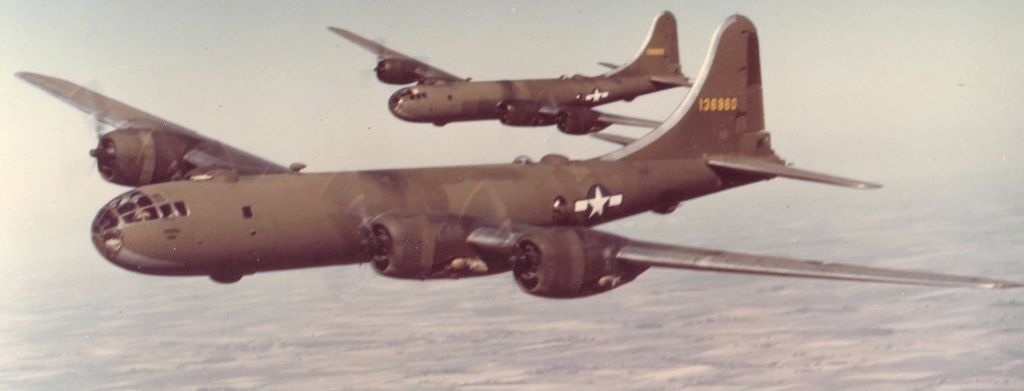

For more info on the "forgotten war" here's a great link - http://www.cbi-history.com/index.html
Regards Duggy
-
12 years ago
 Main Admin
Main Admin -
 Level 7MG
Level 7MG Olive drab B-29's... in WWII color. I don't think I've seen them before. Very cool.
Olive drab B-29's... in WWII color. I don't think I've seen them before. Very cool.
Thanks for yet another outstanding article
-
 Main Adminyeah, never saw an olive B 29, as usual very interesting stuff and pictures
Main Adminyeah, never saw an olive B 29, as usual very interesting stuff and pictures
-
12 years agoFri May 10 2013, 07:46am
 AdminYears ago I did some research on olive B-29s, when I worked on my Home Defence DGen campaigns, but without much success. What I like to now is, when the use of olive drab was abandoned. Was it still in use, when XX Bomber Command flew its first attacks on Japan?
AdminYears ago I did some research on olive B-29s, when I worked on my Home Defence DGen campaigns, but without much success. What I like to now is, when the use of olive drab was abandoned. Was it still in use, when XX Bomber Command flew its first attacks on Japan? -
 Level 7I noticed the peculiar style of leaving all leading edges unpainted on these bombers. This was also very common for the late P-47 models of the 8th AF 56th FG. Wonder what the story behind this style is. I figured it had to do with practical reasons as Zemke's T-bolt's were often repainted in field conditions and the undersides were left unpainted.
Level 7I noticed the peculiar style of leaving all leading edges unpainted on these bombers. This was also very common for the late P-47 models of the 8th AF 56th FG. Wonder what the story behind this style is. I figured it had to do with practical reasons as Zemke's T-bolt's were often repainted in field conditions and the undersides were left unpainted.
Perhaps it was easier/faster (I doubt that) to create a demarcation line for the wings against the panel line instead of having to paint it on the leading edge the traditional way? -
12 years agoFri May 10 2013, 02:09pm
 Main Admin[quote]
Main Admin[quote]
Years ago I did some research on olive B-29s, when I worked on my Home Defence DGen campaigns, but without much success. What I like to now is, when the use of olive drab was abandoned. Was it still in use, when XX Bomber Command flew its first attacks on Japan?
Yes they were used on the early raids check "Ding How" third photo down.
The major production version of the Superfortress was the B-29, 2513 of which were built. 1620 of them were built by Boeing at its Wichita, Kansas plant, 536 by Martin at its Omaha, Nebraska plant, and 357 by Bell at its plant in Marietta, Georgia. Including the B-29a and b models, about 3,900 were built.
Only the very early Wichita-built models were delivered in olive drab and grey camouflage paint, with the remainder being delivered unpainted.
The first production B-29s began to roll off the production lines at Boeing-Wichita in September of 1943. The first B-29s appeared on the production lines at Bell-Atlanta (Marietta) in February of 1944. The first Martin-Omaha B-29 was delivered in mid-1944. The new Boeing plant at Renton built only the B-29A version.
LINK --- http://www.hyperscale.com/2011/reviews/decals/iliad48021decalreviewkb_1.htm
-
11 years agoTue May 03 2016, 03:06pm
 Main Admin
Main Admin
Post a reply
- Go to Previous topic
- Go to Next topic
- Go to Welcome
- Go to Introduce Yourself
- Go to General Discussion
- Go to Screenshots, Images and Videos
- Go to Off topic
- Go to Works in Progress
- Go to Skinning Tips / Tutorials
- Go to Skin Requests
- Go to IJAAF Library
- Go to Luftwaffe Library
- Go to RAF Library
- Go to USAAF / USN Library
- Go to Misc Library
- Go to The Ops Room
- Go to Made in Germany
- Go to Campaigns and Missions
- Go to Works in Progress
- Go to Juri's Air-Raid Shelter
- Go to Campaigns and Missions
- Go to Works in Progress
- Go to Skinpacks
- Go to External Projects Discussion
- Go to Books & Resources












